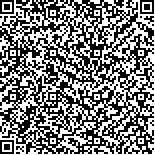|
|
| |
|
|
| 本文已被:浏览 1641次 下载 1268次 |

码上扫一扫! |
|
|
| 脑卒中高危人群空腹血糖水平对颈动脉斑块形成的影响及中医证型分布特征 |
|
张昕洋1, 陈志刚2, 刘雪梅2, 张志辰2, 金香兰2, 梁晓3, 盛雪4, 杨秀泉4, 张志军5, 贾鸿雁6, 吴浩6, 李爱辉7, 张永顺7, 肖建彪8, 张腾9, 齐有胜9, 陈宝鑫2
|
|
1.北京中医药大学, 北京 100029;2.北京中医药大学东方医院, 北京 100079;3.中国中医科学院西苑医院, 北京 100091;4.北京王佐镇社区卫生服务中心, 北京 100074;5.北京蒲黄榆社区卫生服务中心, 北京 100075;6.北京方庄社区卫生服务中心, 北京 100079;7.北京花乡社区卫生服务中心, 北京 100160;8.北京大红门社区卫生服务中心, 北京 100068;9.北京东铁营社区卫生服务中心, 北京 100079
|
|
| 摘要: |
| [目的]研究脑卒中高危人群空腹血糖(FBG)水平对颈动脉斑块形成的影响及中医证型分布特征。[方法]选取2012年6月至2015年3月北京王佐镇、蒲黄榆、方庄、花乡、大红门、东铁营社区卫生服务中心符合脑卒中高危诊断者5 090例作为研究对象,进行统一的问卷调查、体格检查、实验室检验、颈动脉超声检查、中医症状采集;依据FBG水平分级标准;比较不同FBG水平对颈动脉斑块形成的影响、不同FBG水平下斑块形成者中医证型分布特征。[结果]在有无颈动脉斑块形成的人群间,FBG分级水平结果存在统计学差异(P<0.01);以正常血糖(NFG)为基准,校正其他危险因素和影响因素后,空腹血糖受损(IFG)斑块形成风险为NFG的1.352倍[95% CI(1.165,1.570),P<0.01],糖尿病(DM)斑块形成风险为NFG的1.552倍[95% CI=(1.328,1.814),P<0.01];在IFG痰湿证有斑块例数所占百分比大于无斑块例数所占百分比(P<0.05),在DM血瘀证、内火证有斑块例数所占百分比大于无斑块例数所占百分比(P<0.05)。[结论]IFG和DM可能都是颈动脉斑块形成的独立危险因素,与其他证型比较,IFG人群中痰湿证,DM人群中血瘀证、内火证,可能与颈动脉斑块形成具有更强的相关性。 |
| 关键词: 脑卒中高危人群 空腹血糖 独立危险因素 颈动脉斑块 中医证型 |
| DOI:10.11656/j.issn.1672-1519.2019.04.10 |
| 分类号:R743.3 |
| 基金项目:2011年医改重大专项项目;国家重点研发计划课题(2018YFC1704303)。 |
|
| Effects of different fasting blood glucose levels on carotid plaque formation and the distribution characteristics of traditional Chinese medicine syndrome types in population with high risk of stroke |
|
ZHANG Xinyang1, CHEN Zhigang2, LIU Xuemei2, ZHANG Zhichen2, JIN Xianglan2, LIANG Xiao3, SHENG Xue4, YANG Xiuquan4, ZHANG Zhijun5, JIA Hongyan6, WU Hao6, LI Aihui7, ZHANG Yongshun7, XIAO Jianbiao8, ZHANG Teng9, QI Yousheng9, CHEN Baoxin2
|
|
1.Beijing University of Chinese Medicine, Beijing 100029, China;2.Dongfang Hospital, Beijing University of Chinese Medicine, Beijing 100079, China;3.Xiyuan Hospital, China Academy of Chinese Medical Sciences, Beijing 100091, China;4.Wangzuozhen Community Health Service Center, Beijing 100074, China;5.Puhuangyu Community Health Service Center, Beijing 100075, China;6.Fangzhuang Community Health Service Center, Beijing 100079, China;7.Huaxiang Community Health Service Center, Beijing 100160, China;8.Dahongmen Community Health Service Center, Beijing 100068, China;9.Dongtieying Community Health Service Center, Beijing 100079, China
|
| Abstract: |
| [Objective] To study the effects of different fasting blood glucose (FBG) levels on carotid plaque formation and the distribution characteristics of traditional Chinese medicine (TCM) syndrome types in population with high risk of stroke.[Methods] From June 2012 to March 2015,5 090 patients with diagnosis of high risk of stroke from community health service centers of Wangzuozhen,Puhuangyu,Fangzhuang,Huaxiang,Dahongmen,and Dongtieying in Beijing were selected,applied unified questionnaire,physical examination,laboratory examination,carotid artery ultrasound examination,and TCM symptoms collection. The effects on carotid plaque formationof groups with different FBG levels and the distribution characteristics of TCM Syndrome Types were analyzed.[Results] There was a significant difference shown in the result of FBG level between patients with or without carotid plaque formation (P<0.01). After adjusting other risk factors and influencing factors,impaired fasting glucose (IFG)was 1.352 times the plaque formation risk of normal fasting glucose (NFG)[95%CI(1.165,1.570),P<0.01],and diabetes mellitus (DM) was 1.552 times the plaque formation risk of NFG[95%CI=(1.328,1.814),P<0.01]. On IFG level,patients with phlegm-dampness syndrome showed a higher percentage of plaque cases than that of non-plaque cases(P<0.05),while patients with blood-stasis syndrome and internal-fire syndrome showed a higher percentage of plaque cases than that of non-plaque cases (P<0.05)on DM level.[Conclusion] IFG and DM may both be independent risk factors to carotid plaque formation. Phlegm-dampness syndrome in IFG population,blood-stasis syndrome and internal-fire syndrome in DM population might have stronger correlation with carotid plaque formation than other TCM syndromes. |
| Key words: population with high risk of stroke fasting blood glucose independent risk factor carotid plaque traditional Chinese medicine syndrome type |
|
|
|
|
